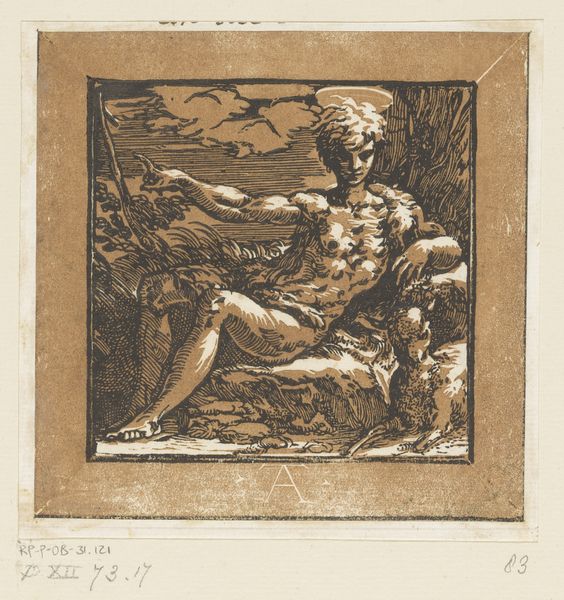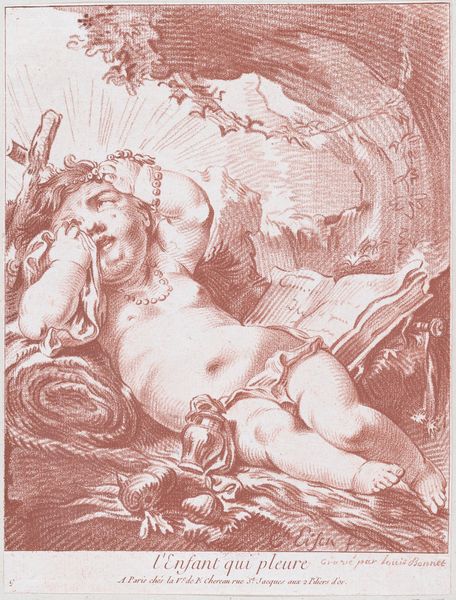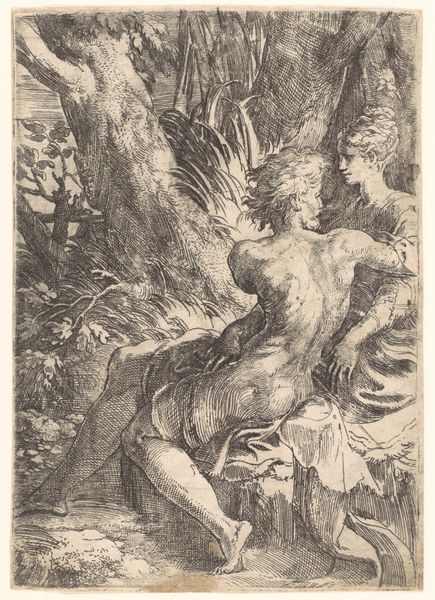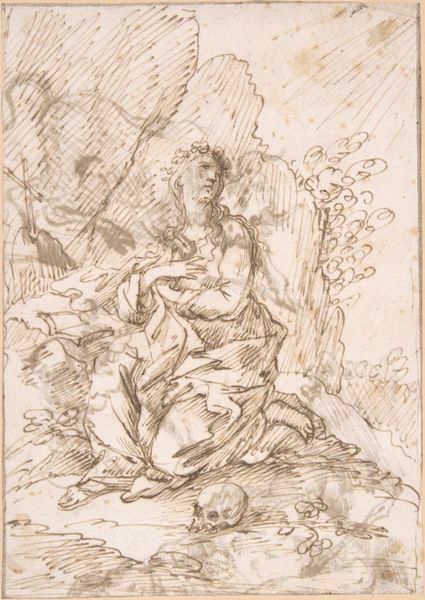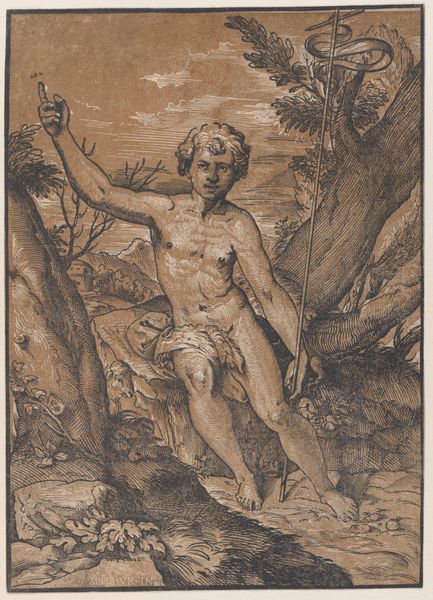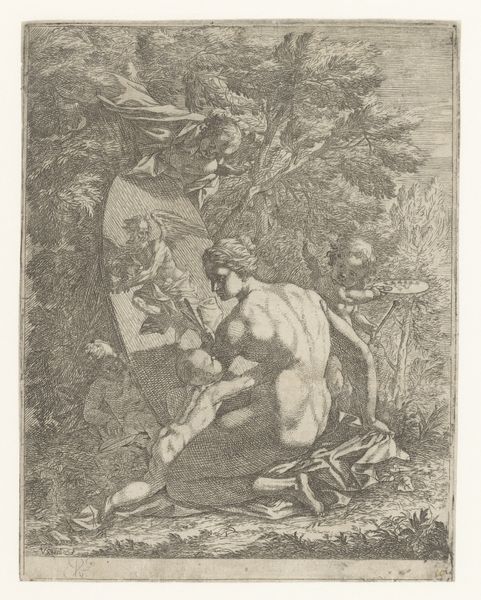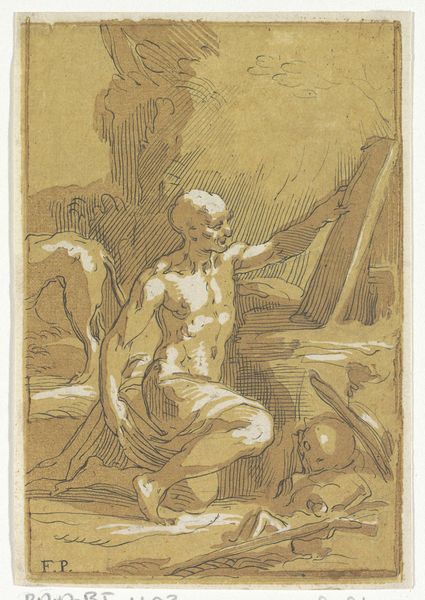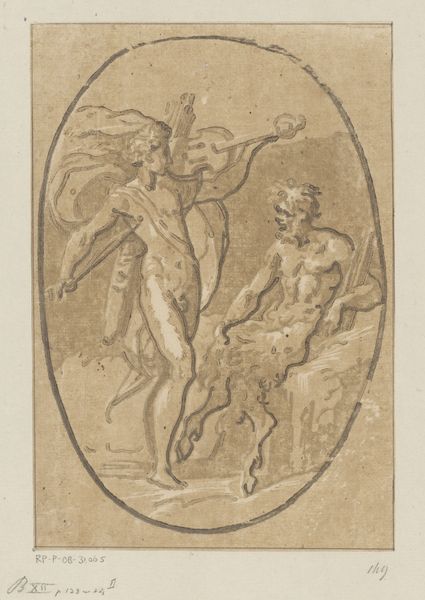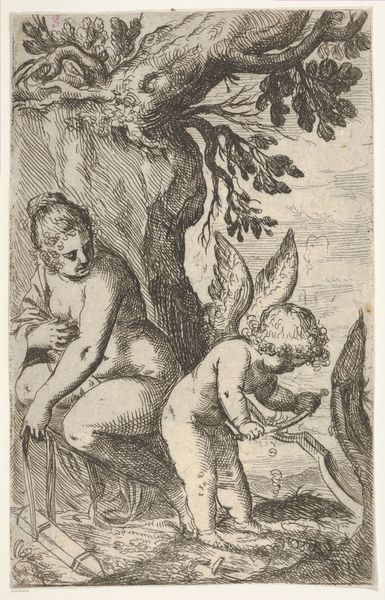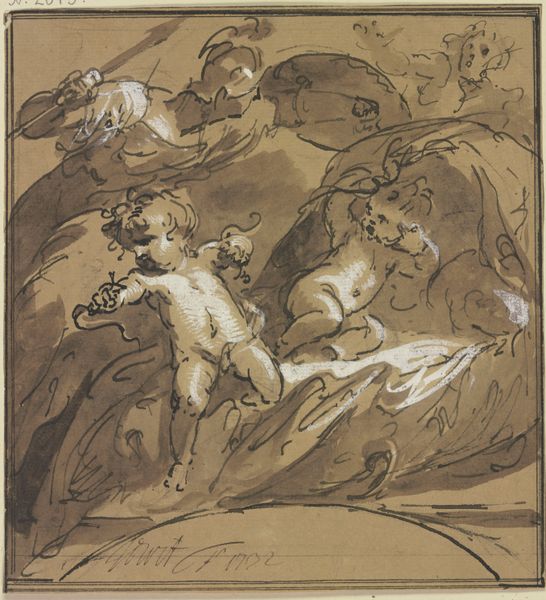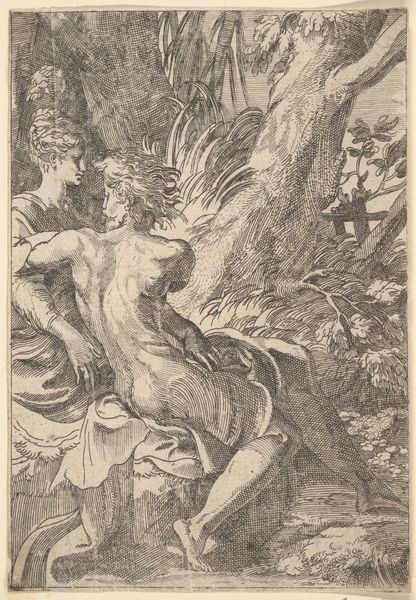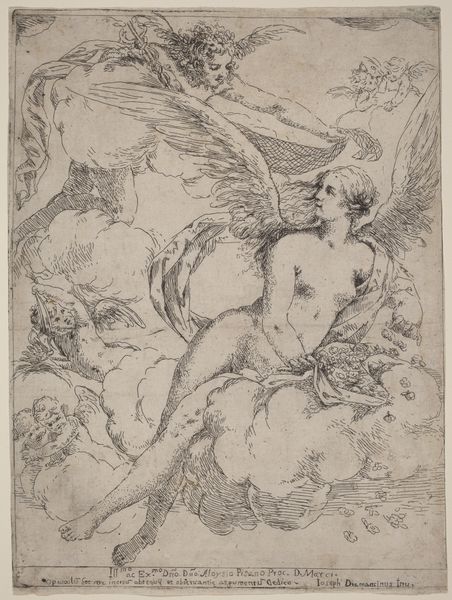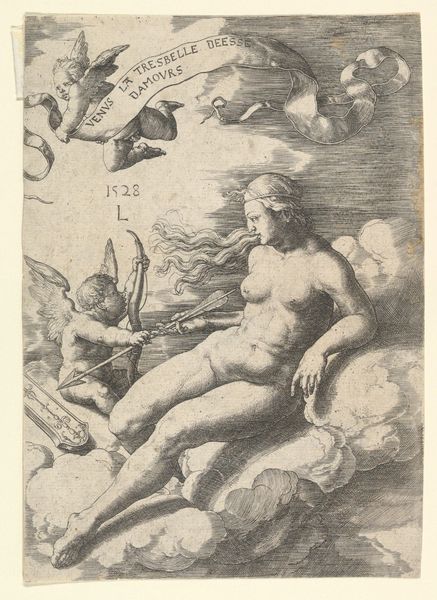
drawing, print, ink
#
drawing
#
ink painting
# print
#
pen sketch
#
figuration
#
ink
#
italian-renaissance
Dimensions: 122 mm (height) x 109 mm (width) (bladmaal)
Editor: Here we have Antonio da Trento’s "Johannes Døberen i ørkenen," created sometime between 1500 and 1550. It’s an ink print. The figure dominates the space. It is stark yet intriguing. What strikes you most about its formal qualities? Curator: I find the artist's deployment of line most compelling. Consider the cross-hatching that articulates form, particularly within the figure's musculature and the surrounding landscape. The density and directionality of these lines contribute significantly to the modeling of light and shadow. Editor: Yes, the use of line is striking. What does that achieve? Curator: Observe how this rigorous linear structure delineates form, not only establishing a sense of three-dimensionality on a two-dimensional plane but also creating a dynamic visual rhythm throughout the composition. The texture created almost simulates a kind of tapestry. How do you perceive the relationship between the figure and the negative space? Editor: Well, there’s certainly a contrast in their visual weights, it gives focus on the subject’s torso, but does create imbalance. Curator: Precisely. This tension is central to understanding the print's aesthetic impact. And further highlights the Renaissance exploration of depth, anatomy, and idealization within a visually engaging format. Editor: This has given me a whole new perspective of line and spatial representation, thank you. Curator: And for me, a renewed appreciation for the sheer versatility and enduring power of ink as a medium for artistic expression.
Comments
No comments
Be the first to comment and join the conversation on the ultimate creative platform.
